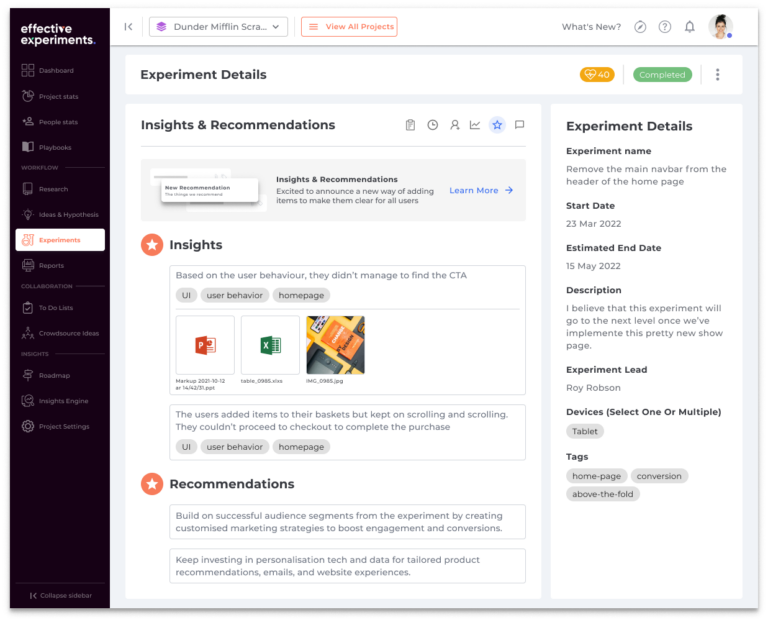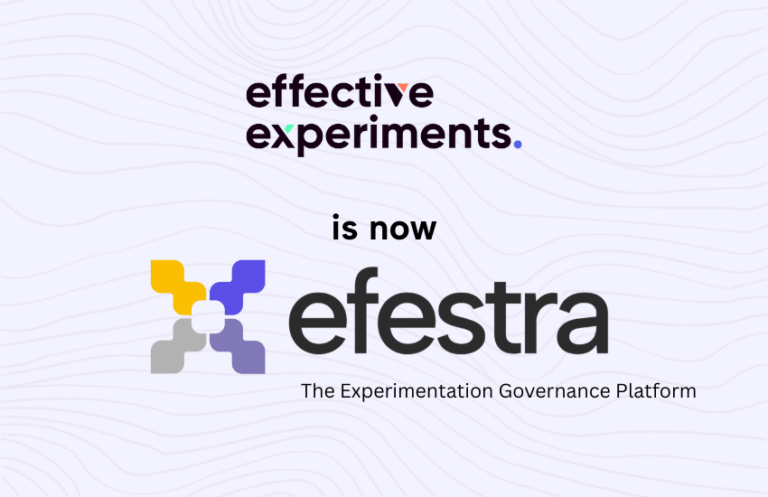TL;DR of this article : A powerful update is coming to Effective Experiments. We are changing the way of capturing insights to make it more powerful, visible and actionable by the rest of the business.
What is an insight? What makes a valuable insight?
This is a question that we have been asking ourselves and our customers over the years since we started Effective Experiments back in 2014.
We observed the challenges faced by CRO and Experimentation teams sharing PowerPoint decks and spreadsheets of their experiments and it become predictable that their wider organization was not as engaged as the teams hoped they would be.
Let’s look at what was (and is still) typically shared by the experimentation specialists. The samples below are dummy but representative of the ones we came across
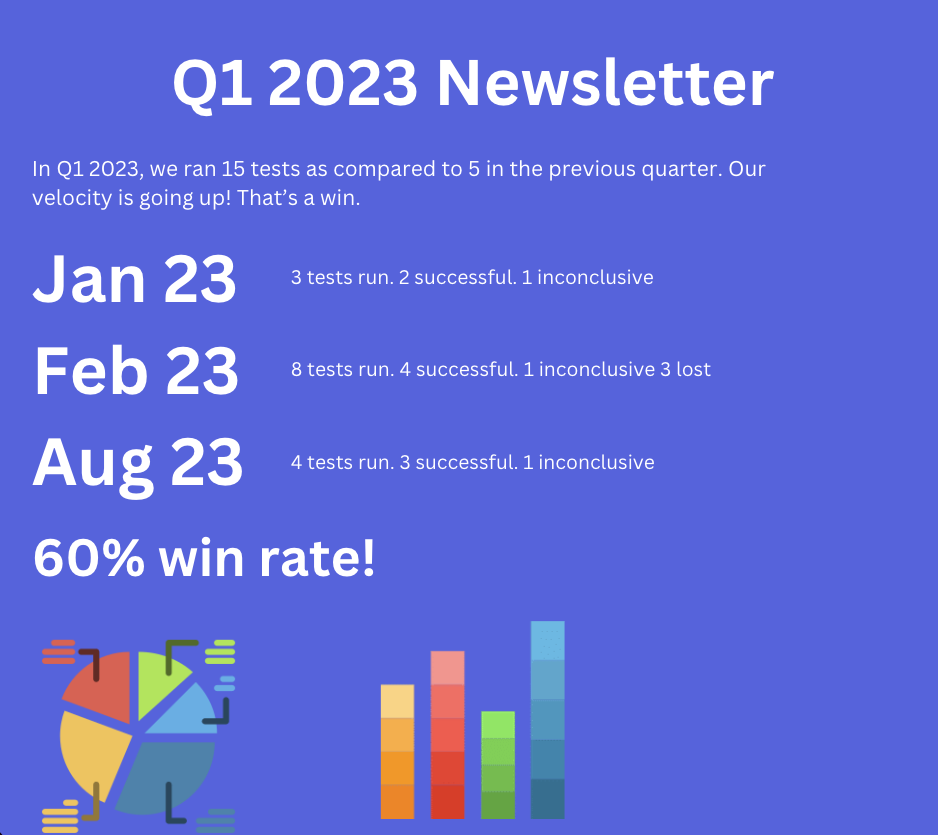
A newsletter blast with key stats of activity and win rates
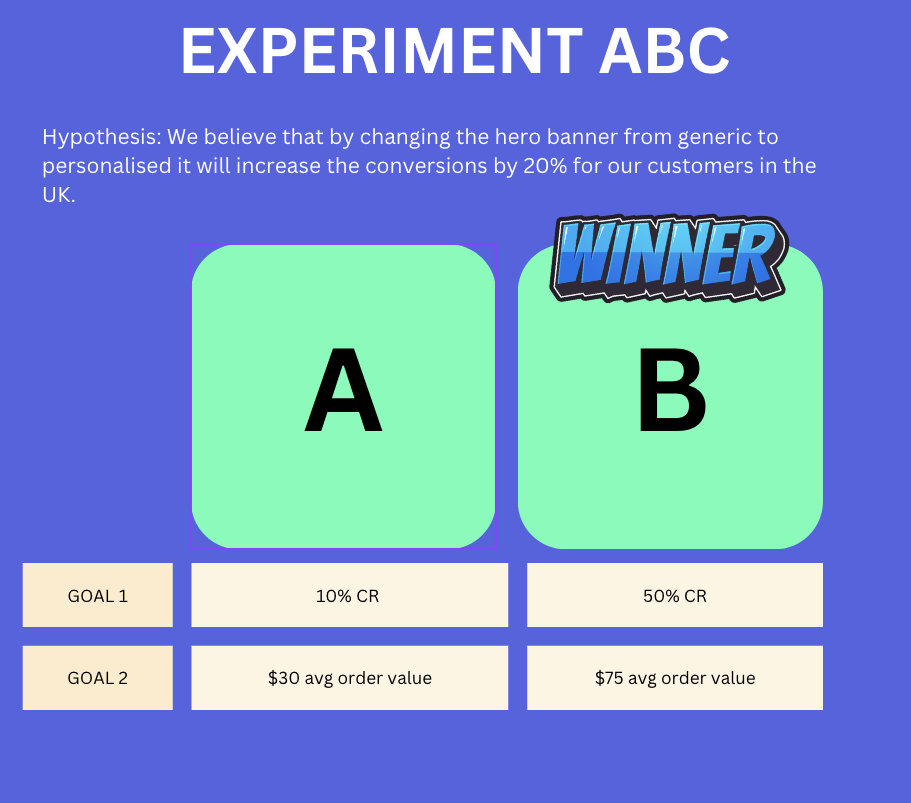
A slide of an experiment with screenshots and results
These are typically shared by practitioners and works well if the intended audience are practitioners as well.
The wider business – the stakeholders and c-suite may give the impression that they want this information but in reality they’re looking for insights and recommendations that will help them make better decisions.
What makes an insight useful?
- Targeted – It is aimed at a specific audience or person and the insight messaging is tailored to them
- Clear – It is jargon free and avoids all the traps of complexity.
- Indicates or inspires action – The insight must tell the reader what can be done with the information presented to them or gives them enough to draw their conclusions.
There is one more aspect that makes it critical and that is – It should be easily findable
Unfortunately, this isn’t the case in companies especially the ones that have relied on spreadsheets and PowerPoints. All those insights are locked in systems held by gatekeepers with no easy way to digest and utilise the information let alone find it.
At Effective Experiments, we made it easy to capture learnings and recommendations as part of the experimentation workflow but we realised there was a challenge.
The old model allowed free text input for the learnings and recommendations at the end of the test workflow.
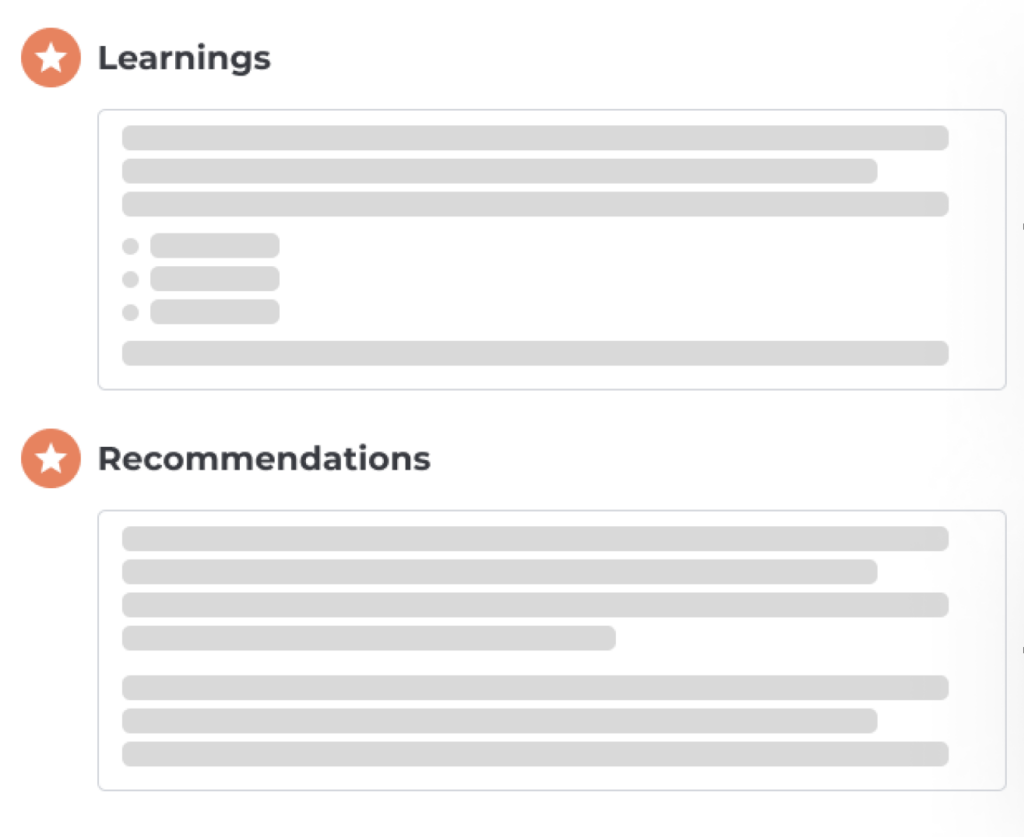
Users were using writing paragraphs and often filling it up with jargon and finding good insights from this was like a needle in a haystack and this is the problem we aim to address in our upcoming update
Structured Insights
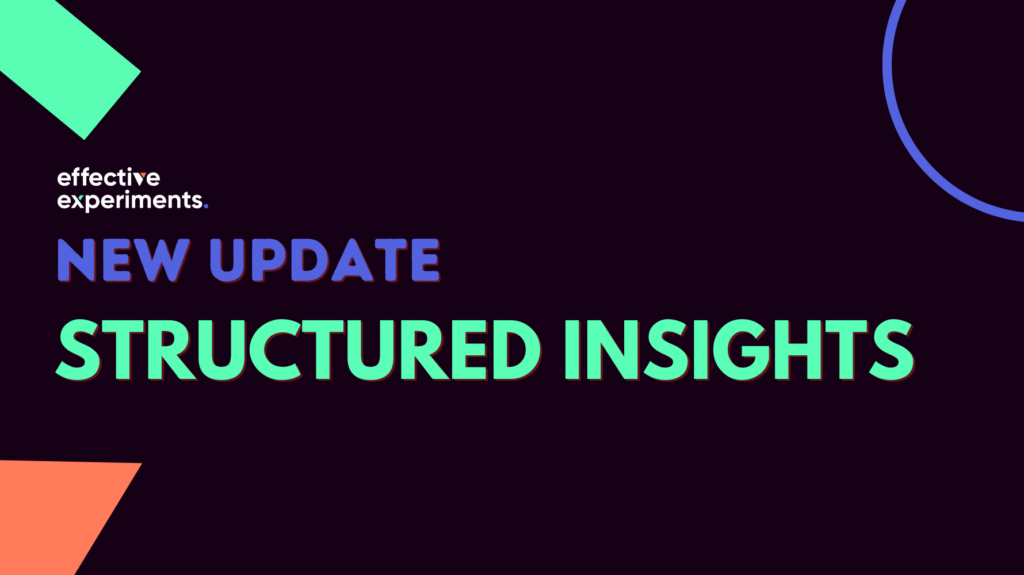
Similar to the capture of research insights, the Learnings & Recommendations model is being updated to capture Insights with the following in mind
- Simple easy to read statements
- Tagged and classified as to make findability easy
- enriched with additional information (screenshots, attachments)
Every experiment workflow will have the new model of capturing insights and will streamline the way an experimentation team thinks about the learnings from an experiment rather than focussing just on data and jargon.
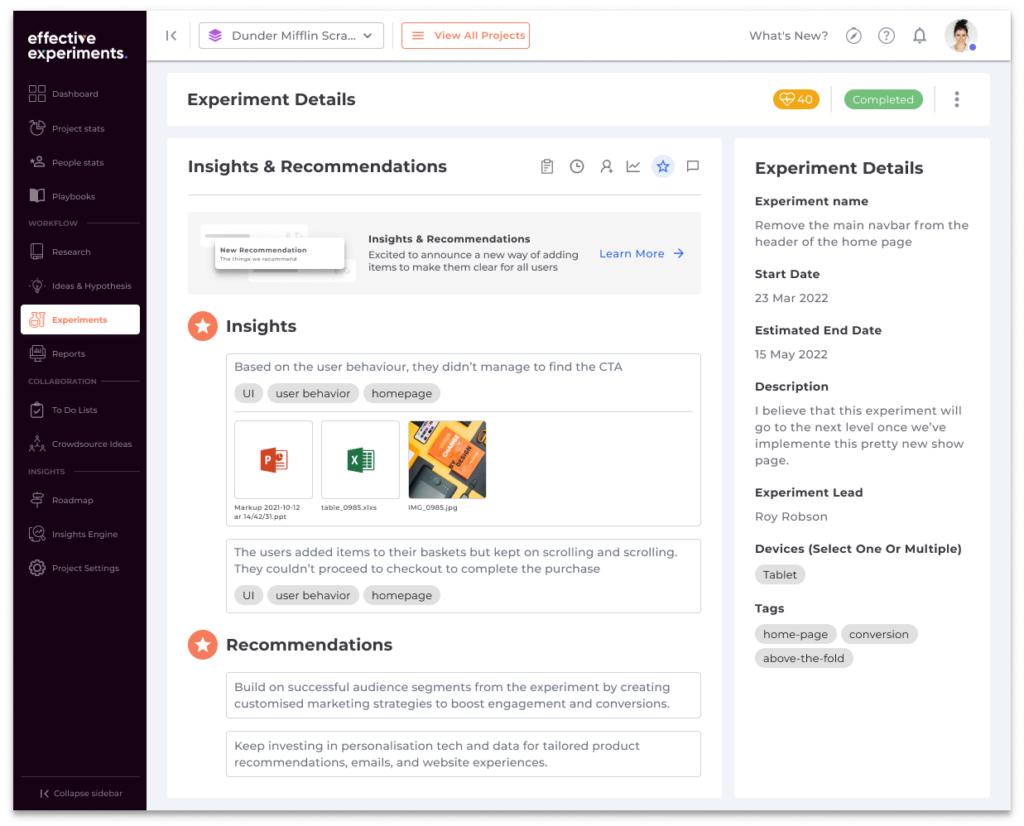
These “bite-sized” insights will ultimately fill up the Knowledgebase and will be fully searchable with our powerful Insights Engine search functionality.
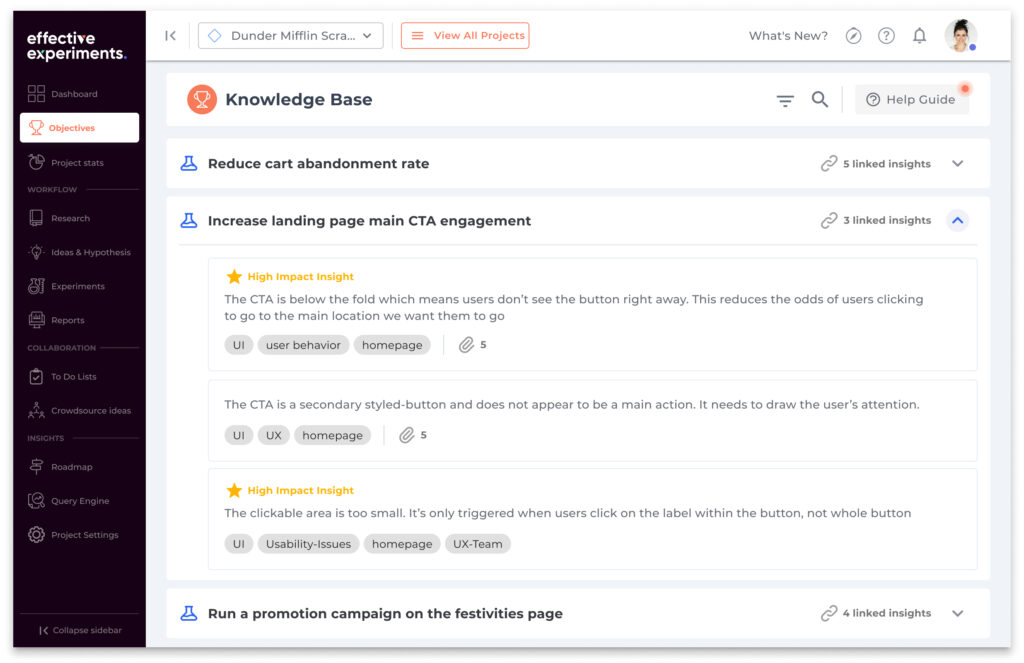
We will close the loop from idea to experiment to learnings and into new experiments with this update.

This functionality will be available on all Effective Experiments plans when launched.
Here’s a video announcing this in more detail
Our mission has always been about making Experimentation Insights valuable to the wider business and improving the quality and trust in the data being input in the process.
Not a customer of Effective Experiments yet? Contact us and let us show you a better way of managing an experimentation program

